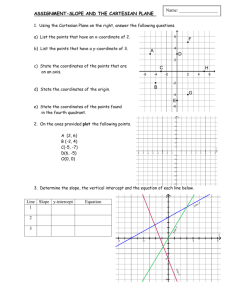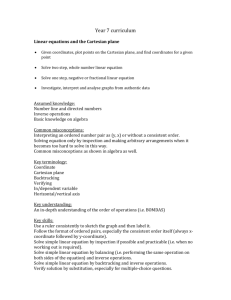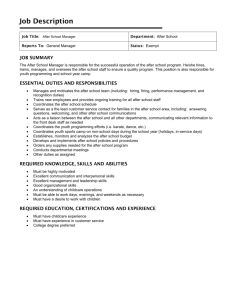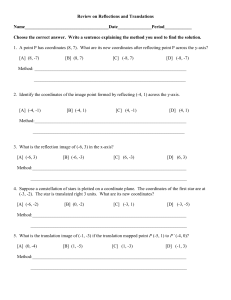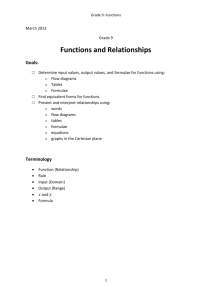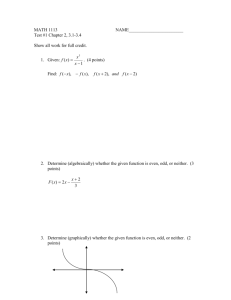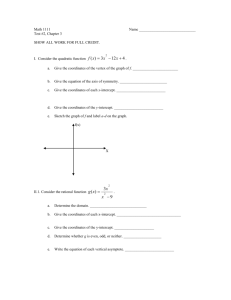Lecture notes - Miriam Posner
advertisement
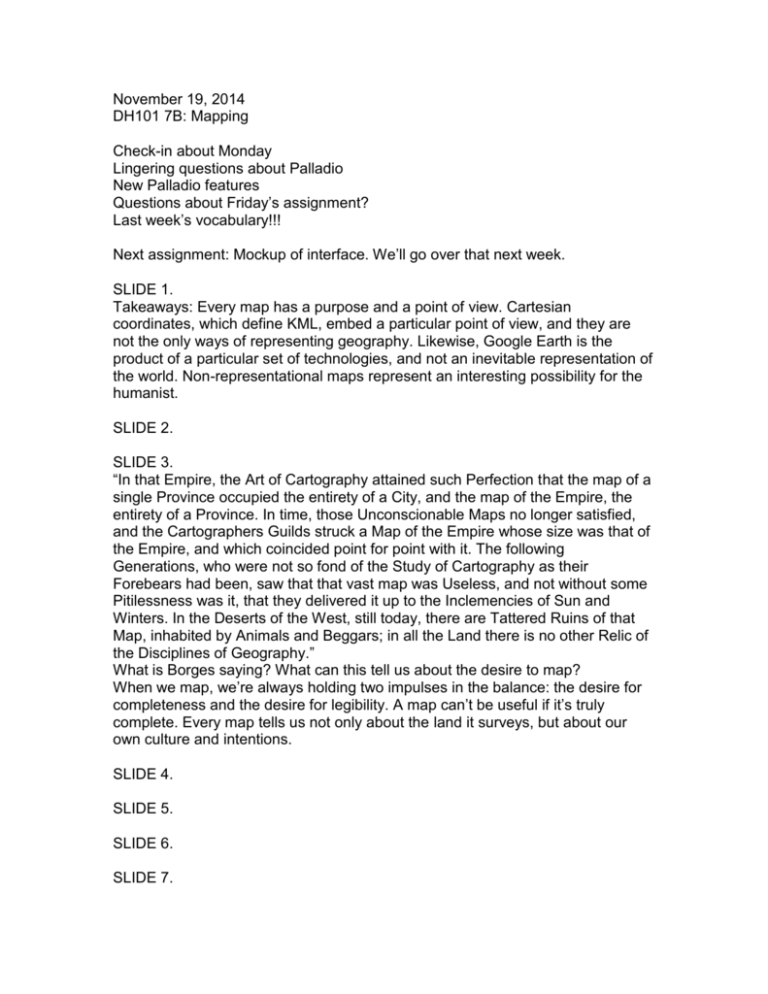
November 19, 2014 DH101 7B: Mapping Check-in about Monday Lingering questions about Palladio New Palladio features Questions about Friday’s assignment? Last week’s vocabulary!!! Next assignment: Mockup of interface. We’ll go over that next week. SLIDE 1. Takeaways: Every map has a purpose and a point of view. Cartesian coordinates, which define KML, embed a particular point of view, and they are not the only ways of representing geography. Likewise, Google Earth is the product of a particular set of technologies, and not an inevitable representation of the world. Non-representational maps represent an interesting possibility for the humanist. SLIDE 2. SLIDE 3. “In that Empire, the Art of Cartography attained such Perfection that the map of a single Province occupied the entirety of a City, and the map of the Empire, the entirety of a Province. In time, those Unconscionable Maps no longer satisfied, and the Cartographers Guilds struck a Map of the Empire whose size was that of the Empire, and which coincided point for point with it. The following Generations, who were not so fond of the Study of Cartography as their Forebears had been, saw that that vast map was Useless, and not without some Pitilessness was it, that they delivered it up to the Inclemencies of Sun and Winters. In the Deserts of the West, still today, there are Tattered Ruins of that Map, inhabited by Animals and Beggars; in all the Land there is no other Relic of the Disciplines of Geography.” What is Borges saying? What can this tell us about the desire to map? When we map, we’re always holding two impulses in the balance: the desire for completeness and the desire for legibility. A map can’t be useful if it’s truly complete. Every map tells us not only about the land it surveys, but about our own culture and intentions. SLIDE 4. SLIDE 5. SLIDE 6. SLIDE 7. Cartesian coordinate system: “a coordinate system that specifies each point uniquely in a plane by a pair of numerical coordinates” — a way to specify location in three-dimensional space. SLIDE 8. Ptolemy, 90 AD – 168 AD, Greco-Roman writer of Alexandria: pioneered the making of maps based on perspective projection (view from a finite distance) and a system of coordinates for locating features. He assigned coordinates to all the places and geographic features he knew, in a grid that spanned the globe. (Ptolemy’s maps looks distorted because his data was inaccurate.) SLIDE 9. The sixteenth century in Europe saw a resurgence of interest in maps. Does anyone know why? (Efforts to control and divide land) SLIDE 10. Mercatur projection, 1527. Size of land masses are secondary to straight lines, grid, mathematical precision. (Britain and Europe appear relatively large, compared with the rest of the world.) Good for nautical purposes because it helped sailors measure out the fastest route in straight lines. SLIDE 11. SLIDE 12. Traditional Japanese maps are oriented around particular landmarks and more accurately depict distances between particular features than the land as a whole. SLIDE 13. SLIDE 14. Australian aboriginal “maps” demonstrate a belief that as ancestors moved through space, they marked ownership of the landscape. In this map, the crocodile is an ancestral being, and in order to understand the map’s features, you have to be familiar with the land itself. SLIDE 15. SLIDE 16. Why does McLafferty say that GIS has masculinist tendencies? bird’s eye view, detached observer, remotely sense, not reflexive, severs connection between research and subject, positivist Positivism embedded in Cartesian coordinates: “space as fixed through coordinates of latitude and longitude.” Privileges objectivity, denies subjective or non-scientific ways of understanding space. Universalism over regional knowledge. Maps, like data visualizations, give the impression of truthfulness. Maps seem to depict the way things are. SLIDE 17. But is this really how we experience space? In some ways it is, in some ways it isn’t. What are some other ways we order space? SLIDE 18. Denis Wood, Everything Sings, Boylan Heights, Raleigh, NC. Sidewalk graffiti SLIDE 19. Windchimes SLIDE 20. radio waves SLIDE 21. Barking dogs SLIDE 22. Overhead power lines SLIDE 23. Traffic signs SLIDE 24. Attempting to represent the conjunction of time and space is yet another challenge for mapping. As you read in the piece by Ian Gregory, GIS data models do not include a conception of time. Travel Time Tube Map SLIDE 25.


